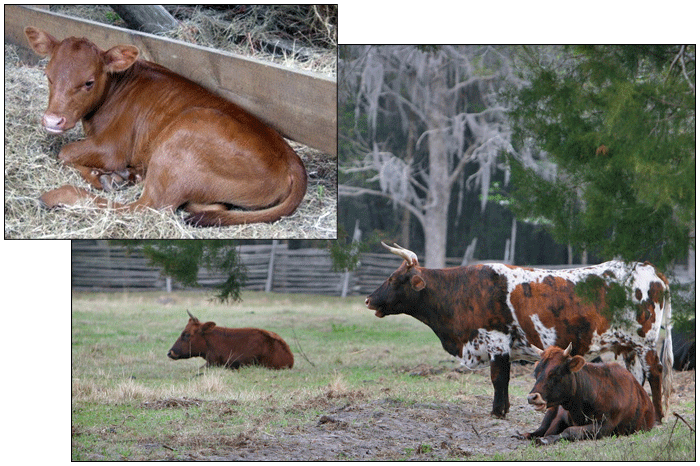Florida Agricultural Museum welcomes newest member
ON JULY 24, 2015, a stunning red cracker calf (see inset in photo above) was welcomed into the world by workers at the Florida Agricultural Museum. Located in Palm Coast, Florida, the Florida Agricultural Museum currently hosts a small herd of cracker cattle: one bull, two cows, and the baby calf. The newborn calf has not yet been named and the Florida Agricultural Museum is accepting suggestions from the public. You may submit your ideas for names to info@agmuseum.com.
What is the distinction between this newborn cracker calf and regular cattle? Cracker cows are one of the oldest breeds and descend from Spanish cattle that came to Florida hundreds of years ago — in the 1500s during the colonization of the Americas. Once on the verge of extinction, there is now a population of about 1,000 cracker cows in the state of Florida, thanks to efforts by the Florida Department of Agriculture and Consumer Services and the Florida Cracker Cattle Association.
Cracker cows are remarkably tolerant to the Florida heat and have adapted to feeding on the sparse, lower-quality grasses available in some areas of the state. They can be black, dark red, and dark brown in color.
Andrew Morrow, the executive director of the Florida Agricultural Museum explains, “Cracker cattle are an important component of Florida’s agricultural heritage. This new addition gives us another opportunity to educate our visitors about the breed’s unique history in our state.”
Students in 4-H clubs or FFA have an excellent opportunity to get hands-on education while taking field trips to the museum. Florida has an extremely rich agricultural heritage; students on field trips can take a guided tour through a furnished 1890s cracker farmhouse, as well as see all of the livestock — cracker horses, cracker cows, mules, chickens, and donkeys.
All students with an interest in agriculture would enjoy their experience at this museum and develop a new appreciation for Florida’s heritage and agricultural history. It is amazing to peek through a window into Florida’s agricultural past, and appreciate just how hard Florida farmers worked and how far our agricultural industry has come. Museum staff look forward to the naming of the new baby cracker calf, which will be announced later this year, and they look forward to continuing their efforts to educate and preserve Florida’s agricultural heritage. Students and visitors of all ages are encouraged to come see the new addition to the family. For more information about the Florida Agricultural Museum, visit www.myag museum.com.
CREDIT
article by JULIE GMITTER

